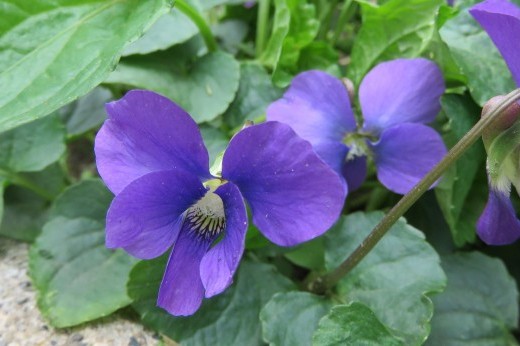Few wild plants are hardy enough to emerge in April. The ground has only recently thawed and most are waiting for just the right amount of consistent warmth and moisture before coming up. But purple deadnettle (Lamium purpureum) takes advantage of the open expanses of soil and lack of competition. This common weedy plant is a member of the mint family and forms early groundcover mats, with fuzzy, spade-shaped leaves and delicate purple-pink flowers, a lovely addition to a spring weed bouquet.
You may see it on the edges of an empty lot, taking over mulched tree pits, or growing in patches across still-bare lawns. Its close relative, henbit (Lamium amplexicaule), has identical flowers but more scallop-shaped leaves and also appears in April. While the leaves of both Lamium species do resemble those in the nettle family, these mints are actually unrelated to true nettles and have no sting, making them "dead." As with all members of the mint family, they have a telltale square-shaped stem, though neither possesses quite the fragrance or culinary potential of their more popular cousins. At best, you can add the younger leaves to a spring green salad or sauté mix.
The name Lamium, most likely from the Greek laimos, refers to the throat or gullet. It might have been named after its throatlike corolla of flowers. Another interpretation may be the wonderful whistling sound you can (attempt) to make by carefully placing one of the tiny flowers between your lips and blowing. Either you’ll call your garden fairies to attention, or more likely, swallow a fair number of flowers trying.
More: Cold-hardy chickweed is everywhere in early spring and fall. You may even spot some in your salad greens.
An important early food source for hungry pollinators, purple deadnettle and henbit also self-pollinate, ensuring their reproduction regardless of whether they have bee visitors. You can elect to yank these shallow-rooted and easy to pull early pioneers to make way for your spring planting, or you can let them be and enjoy a few weeks of their purples and greens. When the weather heats up, both will yellow and wither, waiting for the cooler days of fall before reemerging.




